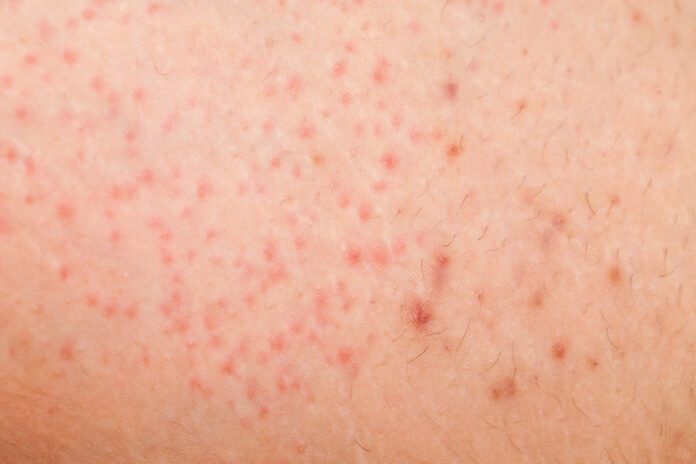Overview Of Rubor
Rubor is synonymous with rashes. Rashes involve changes in the color, feeling, or texture of your skin. Often, the cause of a rash can be determined by how it looks and its symptoms. Skin testing, such as a biopsy, may also be used to help with diagnosis. Other times, the cause of the rash remains unknown.
Commonly Associated With
Skin redness or inflammation; Skin lesion; Rubor; Skin rash; Erythema
Considerations
Often, the cause of a rash can be determined by how it looks and its symptoms. Skin testing, such as a biopsy, may also be used to help with diagnosis. Other times, the cause of the rash remains unknown.
Causes Of Rubor
A simple rash is called dermatitis, meaning inflammation of the skin.
Contact dermatitis is caused by things your skin touches, such as:
- Chemicals in elastic, latex, and rubber products
- Cosmetics, soaps, and detergents
- Dyes and other chemicals in clothing
- Poison ivy, oak, or sumac
- Seborrheic dermatitis is a rash that appears in patches of redness and scaling around the eyebrows, eyelids, mouth, nose, trunk, and behind ears. If it happens on your scalp, it is called dandruff in adults and cradle cap in infants.
Age, stress, fatigue, weather extremes, oily skin, infrequent shampooing, and alcohol-based lotions aggravate this harmless but bothersome condition.
Other common causes of a rash include:
- Eczema (atopic dermatitis). Tends to happen in people with allergies or asthma. The rash is generally red, itchy, and scaly.
- Psoriasis. Tends to occur as red, scaly, itchy patches over joints and along the scalp. Fingernails may also be affected.
- Impetigo. Common in children, this infection is from bacteria that live in the top layers of the skin. It appears as red sores that turn into blisters, ooze, then for a honey-colored crust over.
- Shingles. A painful blistered skin condition caused by the same virus as chickenpox. The virus can lie dormant in your body for many years and re-emerge as shingles. It usually affects only one side of the body.
- Childhood illnesses such as chickenpox, measles, roseola, rubella, hand-foot-mouth disease, fifth disease, and scarlet fever.
- Medicines and insect bites or stings.
Many medical conditions can cause a rash as well. These include:
- Lupus erythematosus (an immune system disease)
- Rheumatoid arthritis, especially the juvenile type
- Kawasaki disease (inflammation of the blood vessels)
- Certain body-wide (systemic) viral, bacterial or fungal infections
Exams & Tests
Your provider will perform a physical examination and ask about your medical history and symptoms.
Questions may include:
- When did the rash begin?
- What parts of your body are affected?
- Does anything make the rash better? Worse?
- Have you used any new soaps, detergents, lotions, or cosmetics recently?
- Have you been to any wooded areas recently?
- Have you noticed a tick or insect bite?
- Have you had any changes in your medicines?
- Have you eaten anything unusual?
- Do you have any other symptoms, like itching or scaling?
- What medical problems do you have, such as asthma or allergies?
- Have you recently traveled out of the area where you live?
Tests may include:
- Allergy testing
- Blood tests
- Skin biopsy
- Skin scrapings
- Depending on the cause of your rash, treatments may include medicated creams or lotions, medicines taken by mouth, or skin surgery.
Many primary care providers are comfortable dealing with common rashes. For more complicated skin disorders, you may need a referral to a dermatologist.
Treatment Of Rubor
Most simple rashes will improve with gentle skin care and by avoiding irritating substances.
Follow these general guidelines:
- Avoid scrubbing your skin.
- Use as little soap as possible. Use gentle cleansers instead.
- Avoid applying cosmetic lotions or ointments directly to the rash.
- Use warm (not hot) water for cleaning. Pat dry, don’t rub.
- Stop using any recently added cosmetics or lotions.
- Leave the affected area exposed to the air as much as possible.
- Try calamine medicated lotion for poison ivy, oak, or sumac, as well as for other types of contact dermatitis.
- Hydrocortisone cream (1%) is available without a prescription and may soothe many rashes. Stronger cortisone creams are available with a prescription. If you have eczema, apply moisturizers over your skin. Try oatmeal bath products, available at drugstores, to relieve symptoms of eczema, psoriasis, or shingles. Oral antihistamines may help relieve itchy skin.



